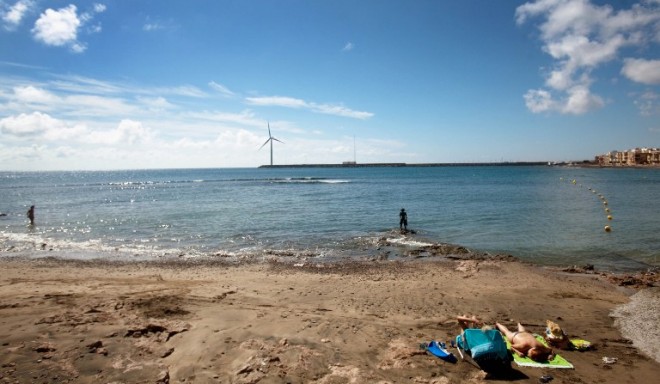
People lie on at the end of a dike in the port of Arinaga on Gran Canaria in the Spanish archipelago of the Canary Islands on October 20, 2013. Rangers on Gran Canaria, the biggest of Spain’s Canary Islands, have killed thousands of Californian Kingsnakes, which have spawned from pet snakes that slithered into the wild. AFP PHOTO/DESIREE MARTIN
MADRID—A Spanish island has summoned world experts to help it stamp out an invasion of white snakes that threaten to eat all its rare lizards, a conservationist said Tuesday.
Rangers on Gran Canaria, the biggest of Spain’s Canary Islands, have killed thousands of Californian Kingsnakes, which have spawned from pet snakes that slithered into the wild.
The snakes pose no threat to humans but have been munching up other creatures such as the rare Gran Canaria Giant Lizard, environmentalist Ramon Gallo, head of a project to control the snake population, told AFP.
“That lizard is unique to Gran Canaria and if the snakes end up spreading all over the island they will make it an endangered species,” he said.
“We are talking about saving the Canary Island’s biodiversity, which is one of the greatest assets the islands have for the world. The Canaries are a biological laboratory and the snakes are putting at risk one of its most important species.”
Gallo’s team won EU funding in 2011 for a four-year campaign to cull the snakes. On Thursday and Friday it will host international experts, including US snake specialists, for a conference to raise awareness of the threat.
He said the snakes were first detected in the wild on Gran Canaria in 1998, apparently spawned from a small number of pets that made it into the bush. The Kingsnake is a popular pet, growing to no longer than 1.8 metres (just under six feet).
They thrived in the mild, sunny climate of Gran Canaria, where they found no natural predators and plenty to eat — chiefly lizards, which they corner or squeeze to death.
The kingsnakes come in various colors, but in the main area where they live on Gran Canaria, most of them are the albino type—white with light yellow stripes and pink eyes.
Since 2007, Gallo said, about 2,000 of them have been killed — clubbed to death by rangers or members of the public, or caught by trained falcons, dogs or in traps.
But uncounted swarms of them are thought to be living out of sight underground, he added.
The International Seminar on the Management of Invasive Exotic Reptiles runs from May 8 to 9 in Las Palmas de Gran Canaria.

